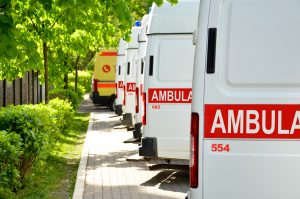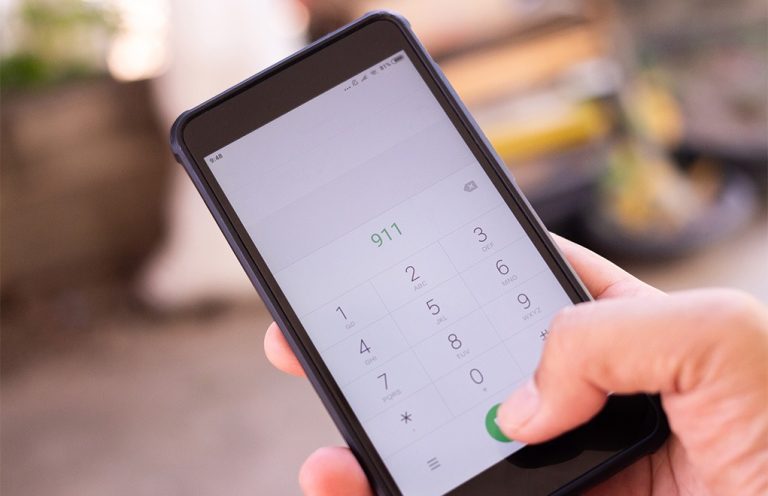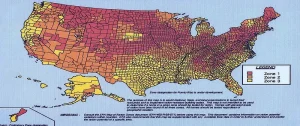227
What do you do if you want to survive in nuclear fallout shelters? Well, a lot of things, but one of those things is having the right equipment stored.
We’re gonna look at 11 items office of Civil Defense told Americans to stock during the height of the Cold War. These were items that they needed to store in their home in the event that they were going to shelter in place and some items that they should take with them if they needed to head to a public fallout shelter.
You have often seen this sign on building it means that indoors is a public fallout shelter we’ll see what they advised in 1968 and compare that to some of the items that are available today. Our guide for this is the 1968 In Time of Emergency that was published by the Office of Civil Defense within the Department of Defense. It doesn’t get more official than this.
This video will be in part a historical lesson of sorts on what Americans were told to stock by the Office of Civil Defense but also a bit of an informative piece to discuss some of the items that are available today, because while the physics of the atomic bomb have not changed, the advancement in technology and the wide availability of modern products has changed.

Now, it’s important to understand at least a little bit what this time period was like. If you’re young enough that this is sort of a foreign concept, in the 1960s it was at the forefront of everyone’s mind. This is the time of the Cuban Missile Crisis after all and the Office of Civil Defense was tasked with a massive task of preparing the American public to survive nuclear war and nuclear fallout.
Public Nuclear Fallout Shelters
Part of that task involved identifying and stocking public fallout shelters and getting Americans to know where to find a public fallout shelter near them. But they also had to spread information on what Americans could do to shelter in place at home. Contrary to some misconceptions, while millions of people would be killed by the initial blast and heat, millions more would be threatened by radioactive fallout – but that is a threat that can be combated!

The premise was that you needed to be prepared in order to stay in a shelter for a minimum of two weeks. Odds were high that you wouldn’t need to stay that long in a shelter; however, an exchange of missiles could goon for a while. Of course, during this two-week period Americans would need critical supplies in order to weather the storm. So, let’s start with what Americans were told to take with them or if they needed to evacuate to a public fallout shelter. Public fallout shelters were designated with a maximum capacity.
What would happen if that maximum capacity was hit and people were banging on the doors to get in? I don’t know.
Regardless, the public fallout shelter should have had enough supplies stocked to sustain the maximum capacity of people for two weeks. Those shelters were stocked with food, water, sanitation equipment, medical kits, and radiological instruments.

However, there were items that people were still advised to bring to the public fallout shelter special. Foods or medical supplies that were unique to your situation were at the top of that list. If you had an infant for example, you needed to bring infant formula. If you were diabetic you needed to bring insulin. You get the idea. They were also told to bring a blanket for each person of the family. A battery-powered radio or flashlight was also advised and extra batteries.
At that time, the government was stocking these public nuclear fallout shelters with large drums of water and sealed canned food. The most common example of these foods are Civil Defense era survival crackers. You can still find these sealed cans today. A total of 419 crackers were in each can. They planed for six crackers per person per day.
Personal Nuclear Fallout Shelters
But what about the millions who lived in suburbs or rural areas often far beyond quick walking distance of the nearest public shelter? Let’s talk about what Americans were told to stock at home to shelter in place during a nuclear war
During this time, the Office of Civil Defense was also publishing a lot of content on how to build your own fallout shelter at home. People were building home shelters for the protection of their families, built from specifications and cost estimates for various types of shelters provided by their local Civil Defense Office.

11 Items People Were Told to Stock
These are 11 items that they described as essential or desired to stock in personal nuclear fallout shelters. They could also be stocked just in your basement or in your home near where you would go in the event of a nuclear war
#1 – Water
Water is even more important than food. In prepping circles, we advise one gallon of water per person per day. In a survival situation in a fallout shelter, the Office of Civil Defense advised one quart of water per person per day. Presumably, the logistics of stocking one gallon per person per day in a public fallout shelter was daunting, let alone the fact that they just had a daunting task of supplying fallout shelters in the first place.
Regardless, one quart of water per person per day should be sufficient for drinking purposes only. If you needed to use water for cleaning or sanitation then it became more problematic.
The federal government was stocking drums of water and in the 1960s we didn’t have the same options of water storage options that we have available today. Today, we have a large assortment of different types of water containers that can be used to stock enough. There are small water containers and large water containers for home storage. Different sizes and costs to fit anyone’s budget.
Two weeks’ worth should not be a massive hurdle for anyone… unless maybe you’ve just got a tiny New York City apartment… in which case you’re going to have to rely on a public fallout shelter… that’s no longer stocked… i.e. you’re dead…

Of course, just as there are plenty of companies catering to preppers today, there were companies catering to people who were trying to prepare for nuclear war.
If you find yourself suddenly sheltering in a basement unexpectedly, remember there are many water reserves in your home water system. The water heater pipes or tanks contain safe drinking water. The ice cubes in the freezer can be easily melted. If you are given advanced warning, fill all available jars and bottles. Sinks and bathtubs will hold large amounts of water.
In a worst case scenario, if the nuclear war extended on and on and on and you had to leave your shelter to get some water, then ideally you would have the means to filter that water in the home.
#2 – Food
As I mentioned, in public nuclear fallout shelters you’re going to be limited to things like dry crackers. Boring, but it’ll get you through. In a home fallout shelter, you have many more options. The home shelter should be stocked with supplies of food and water sufficient for two weeks.
The easiest, most practical logical way to store food where you would be in a fallout shelter is to place your food pantry there. Then you would have dried food, canned food, everything you needed already in place. Short of that, there are plenty of survival foods available to people today.
The most obvious is probably the MRE, the XMRE, things like this. The advantage to foods like this are that 1) it’s a waterproof container, 2) it has a really long shelf life, and 3) you don’t need a separate stove to heat the foods that are inside. Either it doesn’t require heating or the heating elements are inside the package already.

Eating MREs for 14 days would be rough on your system though. They’re called MREs for a reason – Meals Require Enema.
You also have dehydrated and freeze-dried foods. Each packet has its own meal. You just need the ability to heat water, to pour it in the packet, and give it some time. Note that I said you need more water.
Eventually, all that food and water that goes in needs to come out, and if you’re in a room in the basement, crammed in with your family, and someone needs to poo, what are you gonna do?
#3 – Sanitation Supplies
Leaving the shelter is going to expose you to potentially radioactive fallout particles. This is what you want to avoid. It’s why you’re in the shelter in the first place.
The best option for this is to poop in a bucket and pee in a container, but you need to have these containers in place already. You don’t want to be in the shed fumbling for a few buckets while fallout particles are raining down.
We have products like the Luggable Lou bucket toilet designed for situations like this. This can be used in an off-grid property where you’re just getting started and don’t have plumbing or chemical toilets of any type, but these are also perfect for sheltering in place, bunkers, nuclear fallout shelters, you get the idea
It’s a standard five-gallon bucket with a built-in toilet seat. It has a handle spot on the bottom so you can dump it. The lid is also detachable so you could use this on other buckets.
What I like about this is that you can just store a bunch of plastic bags inside, some sawdust, some toilet paper, and have what you need to go poo.
To use it you would line the inside with a plastic bag, do your business sprinkle, some sawdust or compost or what have you on top, and close the lid. Here’s a helpful hint: If you want to control the smell, I’d advise you to keep number two and number one in separate containers. Each will smell bad but they’ll smell even worse when mixed together.

If you’re sheltering in place for an extended period of time and the bag is full of poo or the stench is too bad, just tie it up, open your fallout shelter door, and toss it outside. In some publications, the Office of Civil Defense advised going outside and digging a two foot hole, putting the trash bag in there, and then covering it back up to prevent vermin from getting into it and spreading disease. Personally, I would just throw out the trash bag and plan to bury it when the threat of fallout is over.
#4 – Medicine and First Aid Supplies
Keep a first aid kit and learn how to stop bleeding now. First aid supplies should include all the basics you would expect to find: bandages, aspirin, that sort of thing, and also any unique emergency supplies that you might need. For example, epipens.
Antibiotics might also be needed. There are a variety of companies offering what we can sort of call “over-the-counter antibiotics.” They’re not technically prescription free because you can get these online, you just complete a questionnaire. I’ve got a whole other YouTube video on getting prescription drugs without a prescription.

#5 – Infant Supplies
If you are expecting, have an infant or baby, then you need to plan accordingly. Infant supplies such as canned milk or baby formula, disposable diapers, blankets, clothes – you get the idea. You might want to stock more baby clothes and baby blankets and that sort of thing than you would typically use in a two-week period because your ability to wash everything is going to be limited.
#6 – Cooking and Eating Utensils
You want forks you want spoons and to the extent you need to cook food. I would try to avoid cooking in a small fallout shelter just because you need to account for ventilation but it’s an option. Now, there are a lot of options available to you if you needed to cook inside in a small space. Compact, collapsible hiking stoves, white gas fuel, these are things I’ve used for years.
Just be mindful of the foods that you’re stocking, whether or not you’re going to need to heat that food or boil water. In In Time of Emergency, they even floated the idea of having an electric hot plate! Not great advice as the power is likely to be out. Plan for grid down!
#7 – Clothing
If you’re just sitting around the bunker, odds are high you’re not going to need to change your clothes every day. You might want to change your underwear, though, and if somebody had to leave the fallout shelter in an emergency and then come back, you’d want a change of clothes.
Leave your badly contaminated clothing outside until radiation decays. Radioactive fallout dust could collect on the clothes and that’s not something you want to bring inside the follow-up shelter.
#8 – Bedding
My favorite blanket is the low-cost wool blanket that you’ve probably seen available in Army Navy stores. This is low cost, it’s dense, it’s wool so it’ll keep you warm even if it’s damp, it’s thin yet warm, compact, and it’s just a great overall blanket. You can stock a lot of these in a small amount of space.
You’re likely going to want something more than just a simple blanket. You want to be able to sleep in comfort because in the bunker you’re going to be stressed out wondering what the world is going to look like when you get out. It may be necessary to spend several days in such a refuge so it should be made as comfortable as possible. Having a sleeping pad or an inflatable mattress can only help. You’ll also probably want a pillow.
#9 – Firefight Equipment
If you’re near the blast site one of the big dangers is going to be fires. Damage by fire and blast may render some buildings unfit for protection from fallout. You need to think about this in terms of staying within a shelter. There are plenty of products available for combating home fires, but in a shelter these aren’t things that you’re going to want to blast around. Trust me, if you empty a fire extinguisher inside a shelter everyone is going to want to leave the shelter. A better alternative would be water or sand.
#10 – General Equipment and Tools
You’re not going to be able to store your entire garage worth of tools inside a fallout shelter but you can cover the basics. I’d start with a decent multi-tool. You can go from there and include an ax, a crowbar, other firefighting type tools, and things you might need to escape.
One very important piece equipment is going to a battery or crank-powered radio. It will be difficult to know what is happening outside. In the 1960s, people were not running around with smartphones but after a nuclear war, radio is going to be your friend. You’ll want to know when you can escape the shelter.
If the radio’s down and you don’t have tools like that how are you going to know it’s safe to go outside? Fortunately, there are now products available to people like you and me to measure radioactive fallout levels. Handheld Geiger counters, for example, portable dosimeters. These aren’t the most inexpensive products but they work!
If you needed to know the danger levels outside this is the tool to measure that.
Another, hopefully obvious tool, would be flashlight – and extra batteries!
#11 – Miscellaneous Items
Miscellaneous items can include practical items such as candles, matches, lighters, civil defense instructions, and some personal items. Kids might want a stuffed animal. You might want post-apocalyptic books to read. You might want pen and paper. You might want board games to play, toothbrushes, a sewing kit, and some toiletries.
Think of any other items you want until you can emerge from your nuclear fallout shelter and be one of the few people roaming thes corched Earth alive.
I’ll see you at the rally point!


















